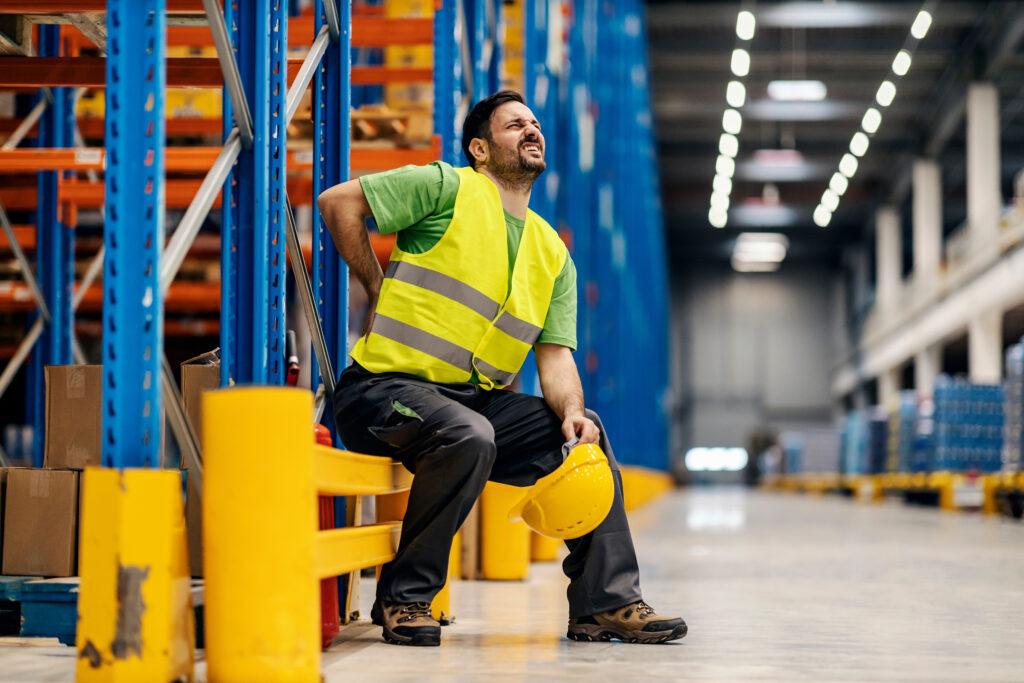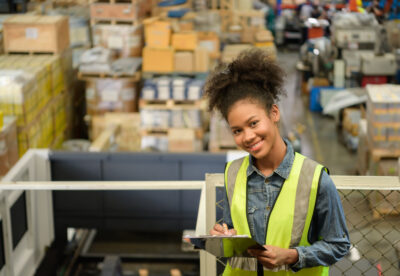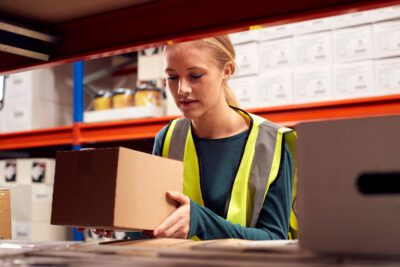Webinar Registration: The P2G Advantage
Webinar Registration: The P2G Advantage LEARN MORE
Improve Worker Safety with Warehouse Robots
Mary Hart, Senior Content Marketing Manager

Warehouses and restaurant kitchens like The Original Beef of Chicagoland in the award-winning TV series The Bear may not seem alike at first glance, but both operate at full throttle in pressure cooker environments keeping workers on constant red alert. In restaurant kitchens, chefs, sous chefs, and assistants handle onslaughts of orders during meal times and know to yell “Behind” as they run through the kitchen to avoid bumping into a colleague and creating a mess, or worse, an injury.
In the warehouse, conveyor belts run nonstop while associates sprint to hit shipping metrics before the next wave of orders arrive. At this breakneck pace in both atmospheres, safety risks and employee burnout loom large. But there’s a solution that provides warehouse managers at least with a path to building happier, healthier, and safer teams — warehouse automation and robotics.
High-Speed = High Risk
Warehouses are a critical part of the global supply chain and are responsible for getting orders from suppliers to consumers quickly — sometimes within a day or even hours. This efficiency and need for immediate fulfillment comes at a cost. The fluctuating nature of order volumes and the need to swiftly process and dispatch material puts immense pressure on warehouse associates. Because of the need to have orders go out as quickly as possible, safety risks escalate, and the mental strain of constant high-alert work can lead to worker fatigue and dissatisfaction.
During crunch times like seasonal peak, warehouse associates struggle to keep pace with endless product orders while forklifts dart around workers racing down aisles to meet quotas and SLAs. The threat of collisions or physical strain comes along with constant exhaustion to tank morale.
Prevent Injuries and Control Costs
According to OSHA, warehousing reports over 5.5 injuries (including strains, sprains, or even fatalities) per 100 workers in 2021, which is almost double the rate of 2.7 incidents in all other industries. A high injury incidence leads to a steep increase in workers’ compensation insurance costs and also negatively impacts your warehouse’s productivity through missed time on the job.
Warehouse automation in the form of autonomous mobile robots (AMRs) offer warehouses a secret weapon for tackling hazardous, repetitive tasks like transport duties and heavy lifting that can cause the most injury to associates. This not only reduces muscle fatigue for humans, but also improves workplace organization and safety while lowering costs.
For example, in transporting goods from receiving docks to storage or packing areas, AMRs utilize their sophisticated navigation systems to avoid collisions, significantly reducing the risk of workplace accidents. This not only streamlines the material handling process but also allows human workers to focus on more complex and rewarding tasks.
By reducing workplace accidents and overexertion through warehouse automation like AMRs, warehouses also significantly improve cost control around medical claims, lawsuits, and replacing injured staff. Giving dangerous tasks, such as those handled by forklifts or other equipment operation, to robots directly minimizes these major HR concerns and budget drains.
Create a Safety Culture
An essential benefit of warehouse automation comes from reinforcing a strong culture of safety as a top corporate priority at your facility. Deploying AMRs shows your associates that you put your employees’ well-being first, despite pressures for speed and performance.
Associates also gain peace of mind from reduced risk exposure on the job, boosting their engagement in their jobs along with employee retention. Demonstrating this commitment to preventing harm through investments in the latest technologies for productivity while emphasizing safety-first fosters goodwill and loyalty from staff.
The Future of Warehouse Safety
An agile and flexible warehouse environment is one where humans and robots unite strengths for maximum safety. By seamlessly integrating AMRs into your fulfillment workflows, warehouses leverage both human and robot skill sets to enable better performance, prevent injuries, and reduce strains.
Our AMRs work perfectly alongside their human colleagues. LocusBots autonomously handle heavy loads and increase productivity 3x while reducing workplace accidents and overexertion. At the same time, associates that are freed from transport duties have more time to upskill themselves into higher-responsibility roles.
Want to find out more about how AMRs will boost productivity and safety at your warehouse? Let’s talk!




